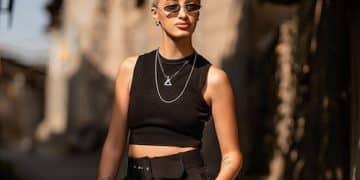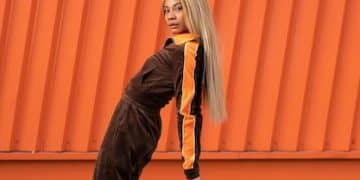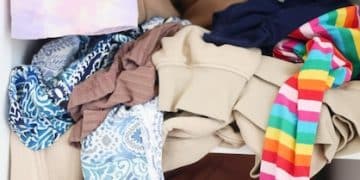Mastering the Art of Layering: 4 Outfit Ideas for All Seasons in 2025
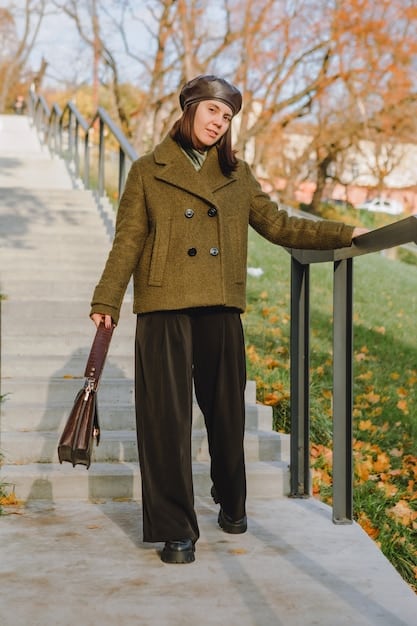
Mastering the art of layering involves strategically combining clothing pieces to create stylish and functional outfits suitable for various weather conditions in 2025, enhancing versatility and personal expression in fashion.
Mastering the Art of Layering: 4 Outfit Ideas for All Seasons in 2025 is essential for creating versatile and stylish looks that adapt to changing weather conditions, allowing you to maximize your wardrobe and express your personal style year-round.
Understanding the Basics of Layering
Layering is more than just piling on clothes; it’s an art that, when mastered, allows you to transition seamlessly through different temperatures and occasions. Understanding the fundamental principles will help you create outfits that are not only stylish but also practical.
The Purpose of Layering
Layering serves multiple purposes, primarily temperature regulation and style enhancement. By adding or removing layers, you can adapt to fluctuating temperatures throughout the day, ensuring comfort without sacrificing style.
Key Elements of a Layered Outfit
A well-layered outfit typically consists of a base layer, a mid-layer, and an outer layer. Each layer plays a crucial role in providing warmth, style, and flexibility.
- Base Layer: The layer closest to your skin, designed to wick away moisture and keep you dry.
- Mid-Layer: Provides insulation and warmth, such as sweaters, cardigans, or fleece jackets.
- Outer Layer: Protects you from the elements, including wind, rain, and snow, with items like coats, jackets, and blazers.
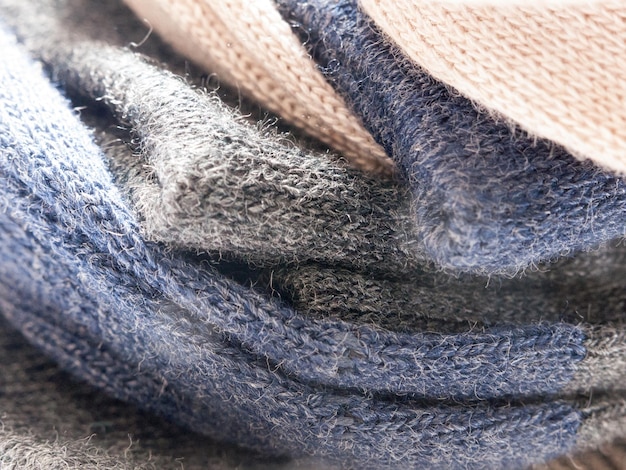
Understanding these basics will set the stage for creating versatile and fashionable layered outfits that are perfect for any season in 2025.
Outfit Idea 1: Springtime Chic
Spring is a season of transition, requiring outfits that can adapt to both cool mornings and warm afternoons. This outfit combines lightweight layers that are both stylish and functional.
Lightweight Trench Coat
A lightweight trench coat is a spring essential. It provides protection from light rain and wind while adding a touch of elegance to your look.
Denim Jacket
A denim jacket is a versatile mid-layer that can be paired with almost anything. It adds a casual, trendy vibe to your outfit while providing extra warmth when needed.
- Base Layer: A simple cotton or linen t-shirt in a neutral color.
- Mid-Layer: A lightweight denim jacket.
- Outer Layer: A pastel-colored trench coat.
- Bottoms: White jeans or a floral print skirt.
Pairing this with sneakers or flats will complete the look, providing comfort and style for a day out in the spring weather.
Outfit Idea 2: Summer Casual Cool
Summer layering might seem counterintuitive, but it’s all about protecting yourself from air conditioning and cooler evenings. This outfit is designed for comfort and style during the warmer months.
Light Cardigan or Kimono
A light cardigan or kimono is perfect for adding a touch of style and warmth without overheating. Opt for breathable fabrics like cotton or linen.
Sun Protection
Layering isn’t just about warmth; it can also protect you from the sun. A lightweight, long-sleeved shirt can shield your skin from harmful UV rays.
- Base Layer: A breathable tank top or camisole.
- Mid-Layer: A flowy, lightweight kimono or cardigan.
- Bottoms: Denim shorts or a maxi skirt.
- Accessories: A wide-brimmed hat and sunglasses for sun protection.
This outfit keeps you cool and comfortable during the day while providing extra coverage for cooler evenings or air-conditioned spaces.
Outfit Idea 3: Autumnal Comfort
Autumn is the quintessential season for layering. The crisp air and changing leaves call for cozy and stylish outfits that offer both warmth and versatility. This outfit focuses on rich textures and warm colors.
Sweater Weather
A chunky knit sweater is a fall wardrobe staple. It provides warmth and comfort while adding a touch of texture to your outfit.
Versatile Scarf
A scarf is both a functional and fashionable accessory. It can be wrapped around your neck for extra warmth or draped over your shoulders for a stylish touch.
- Base Layer: A long-sleeved thermal top or a thin turtleneck.
- Mid-Layer: A chunky knit sweater.
- Outer Layer: A wool coat or a quilted vest.
- Bottoms: Dark wash jeans or corduroy pants.

Complete this look with ankle boots or loafers for a comfortable and chic autumn ensemble.
Outfit Idea 4: Winter Warmth
Winter layering is all about staying warm and protected from the cold. This outfit combines heavy-duty layers that provide maximum insulation without sacrificing style.
Insulated Parka
An insulated parka is essential for braving the winter weather. Look for one with a waterproof and windproof outer shell and a warm lining, such as down or synthetic insulation.
Base Layers
Thermal underwear is crucial for keeping warm in cold weather. Opt for moisture-wicking materials like merino wool or synthetic fabrics.
- Base Layer: Thermal underwear (top and bottom).
- Mid-Layer: A fleece jacket or a thick wool sweater.
- Outer Layer: An insulated parka.
- Bottoms: Insulated pants or fleece-lined leggings.
Pair this with waterproof boots and warm accessories, such as a hat, gloves, and scarf, for complete protection from the winter elements.
Accessorizing Your Layered Outfits
Accessories play a crucial role in completing your layered outfits. They not only add a personal touch but also enhance the overall functionality and style of your look.
Scarves and Hats
Scarves and hats are essential for adding warmth and style to your layered outfits. Choose materials like wool, cashmere, or fleece for maximum comfort and insulation.
Footwear Choices
The right footwear can make or break your layered outfit. Opt for shoes that are both stylish and practical for the weather conditions.
- Spring: Sneakers, flats, or ankle boots.
- Summer: Sandals, espadrilles, or lightweight sneakers.
- Autumn: Ankle boots, loafers, or riding boots.
- Winter: Waterproof boots, insulated boots, or snow boots.
By paying attention to the details and choosing the right accessories, you can elevate your layered outfits and express your personal style in any season.
Choosing the Right Fabrics for Layering
The key to successful layering lies in selecting the right fabrics. Different materials offer varying levels of warmth, breathability, and moisture-wicking properties. Understanding these characteristics will help you create comfortable and functional layered outfits.
Breathable Fabrics
Breathable fabrics are essential for base layers, as they help to wick away moisture and keep you dry. Opt for materials like cotton, linen, or merino wool.
Insulating Materials
Insulating materials provide warmth and are ideal for mid-layers. Choose fabrics like fleece, down, or synthetic insulation for maximum warmth without bulk.
Selecting the right fabrics is crucial for creating layered outfits that are both comfortable and stylish, allowing you to adapt to any weather condition.
| Key Point | Brief Description |
|---|---|
| 🧣 Spring Layering | Light trench, denim jacket ideal for transitional weather. |
| ☀️ Summer Layering | Kimono or light cardigan for sun protection and cool evenings. |
| 🍂 Autumn Layering | Chunky knit, wool coat, and dark jeans. |
| ❄️ Winter Layering | Insulated parka, thermals, and waterproof boots for warmth. |
Frequently Asked Questions
▼
The best base layer fabric is typically merino wool or a moisture-wicking synthetic material. Merino wool is excellent for its warmth-to-weight ratio and natural odor resistance, while synthetics are affordable and quick-drying.
▼
To avoid overheating, choose breathable fabrics and avoid over-layering. Opt for layers that can be easily removed as the temperature changes, and select lightweight materials that allow for proper ventilation.
▼
Yes, layering different patterns and textures can add visual interest to your outfit. However, it’s essential to balance the patterns and textures, ensuring they complement each other rather than clash. Start with a neutral base and add patterned or textured layers gradually.
▼
Essential accessories for layered outfits include scarves, hats, gloves, and appropriate footwear. These accessories not only add warmth and style but also enhance the overall functionality of your look, providing protection from the elements.
▼
Care instructions vary depending on the fabric of each layer. Always check the care labels before washing or drying your clothes. Generally, delicate fabrics like merino wool and cashmere should be hand-washed or dry-cleaned, while durable fabrics like cotton and synthetics can be machine-washed.
Conclusion
Mastering the art of layering for all seasons in 2025 allows for creative, adaptable, and stylish outfits. By understanding the purpose of each layer, choosing the right fabrics, and experimenting with different combinations, you can create a wardrobe that’s ready for anything.



